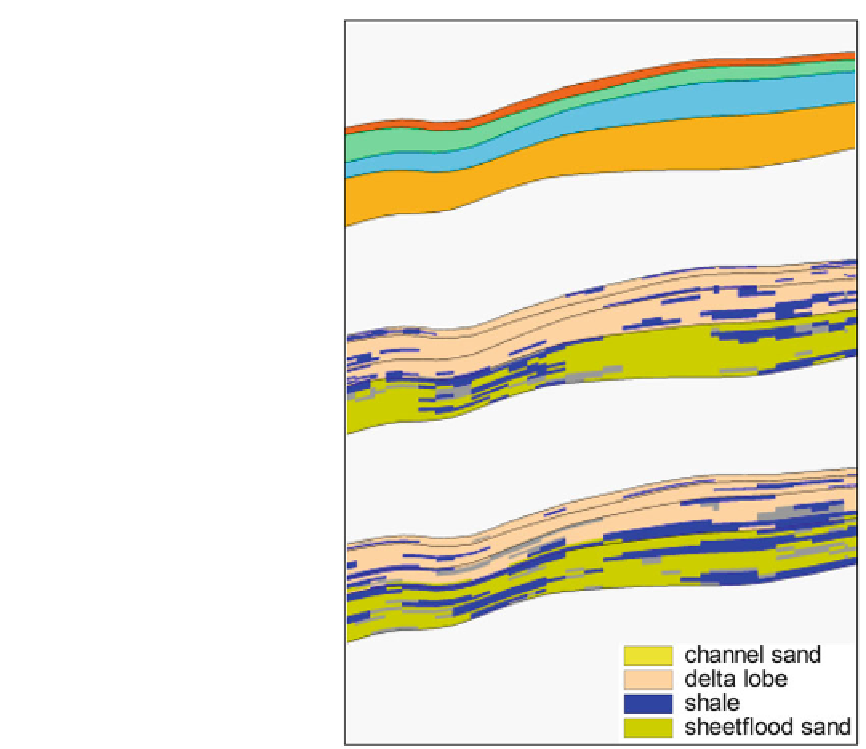Geoscience Reference
In-Depth Information
Fig. 2.44
The Franken
Field:
Top image
: the four
zone subdivision;
middle
image
: pixel (SIS) model
(no trends applied,
stationarity maintained);
bottom image
: trended
pixel (SIS) model
summarise this, we offer a brief resume of practi-
cal things which can be done to check the quality
of the rock model - the QC process.
proportions. Anomalous wells point
to
weaknesses in the model execution.
(c) Make element proportion maps for each ele-
ment in each zone and check these against
well data and the overall concept. This is an
important check on the inter-well probabilis-
tic process.
(d) Check the statistics of the modelled element
distribution against that for the well data
alone; they should not necessarily be the
same, but the differences should be explica-
ble in terms of any applied trends and the
spatial location of the wells.
(e) Make net sand isochore maps for each zone
without wells posted; imposed trends should
be visible and the well locations should not
(no bulls-eyes around wells).
2.8.1 Sense Checking the Rock Model
(a) Make architectural sketches along deposi-
tional strike and dip showing the key features
of the conceptual models. During the
model build switch the model display to
stratigraphic (
simbox)
view to remove the
structural deformation. How do the models
compare with the sketches?
(b) Watch out for the individual well matches -
well by well. These are more useful and
diagnostic
than
the
overall
'facies'

